The following are news announcements made during the past week by the following organizations: Nordson EFD; Q-Track; RURO; NEPS; HID Global, Arjo Systems; DENSO; NXP Semiconductors, and Widex.
Nordson EFD Intros Dispensing Paste for RFID Bonding Applications
Nordson EFD, a manufacturer of precision fluid dispensing systems, has announced its new SolderPlus dispensing paste formula. According to Nordson EFD, SolderPlus is intended to improve bond reliability in RFID tags, dual interface (DI) smart cards and biometric passports.
Such applications require the attachment of an antenna electrically connected to a chip. Manufacturers often use a silver-filled epoxy to bond these components, the company explains, but this requires a curing process, which can affect bond strength if insufficient time is allotted for complete curing. Other process considerations include storage temperature requirements of -32 degrees Fahrenheit (0 degrees Celsius). The process of applying solder paste is faster and easier, according to Nordson EFD, since no curing time is required. What’s more, solder paste can be stored at a higher temperature, requiring less time to thaw.
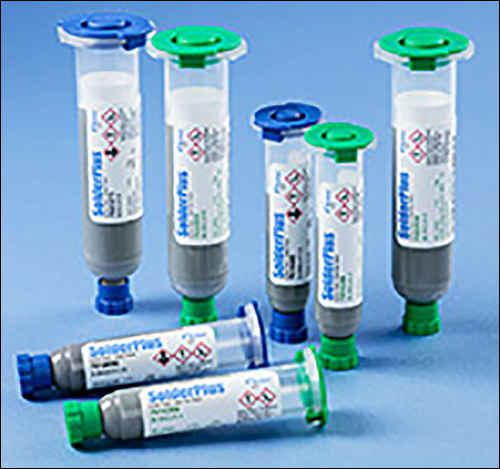
A bending test is often used to determine the lifetime of an RFID card, simulating what can happen if a card become bent in a wallet, in order to determine the point at which electrical disconnection occurs. “The test indicates a SolderPlus bond lasts for more than 20,000 cycles of use,” said Philippe Mysson, Nordson EFD’s business-development manager for solder paste, in a prepared statement. “That is equivalent to about 10 years in a wallet. Silver-filled epoxy bonds last roughly 1,000 cycles or six months.”
According to the company, the chemistry of solder paste makes it safer to use when compared to the chemistry of silver-filled epoxy, which contains toxic materials. Solder paste is also less expensive because it contains no silver.
“We believe each of these factors make our specialized formula of EFD SolderPlus dispense paste a more reliable, cost-effective alternative to other methods used in RFID bonding applications,” Mysson said in the prepared statement. “The reliability of solder joints is 20 times better than existing standard connections. When paired with faster production time, this allows DI smart card and RFID tag manufacturers to improve the quality and reliability of their product while meeting increasing consumer demand.”
Q-Track Launches Forklift Collision Avoidance System
Q-Track Corp. has announced a forklift collision avoidance system known as SafeSpot, which is designed to reduce the incidence of accidents in the workplace by providing a wireless solution to alert workers if a forklift is approaching around a blind corner. A warning light illuminates if a forklift comes within a user-defined warning radius of 20 to 40 feet.
The system requires no maintenance, Q-Track reports, and eliminates the need for workers to wear a tag or other warning device. Q-Track’s Near-Field Electromagnetic Ranging (NFER) technology enables a reliable warning even around corners, due to the low-frequency, near-field nature of the wireless signals.
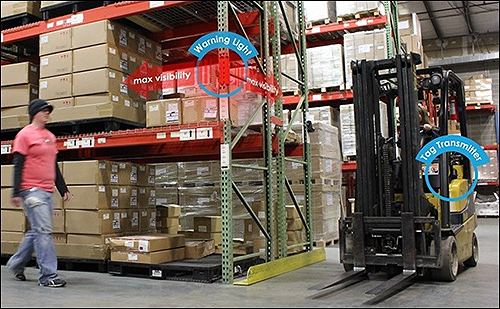
Forklift accidents cost an estimated $3.7 billion per year in the United States, Q-Track says, and cause 20,000 serious injuries and 100 deaths. Such accidents cost companies millions of dollars due to property damage, disrupted business operations and worker-compensation claims. The average cost to a company for a forklift accident is $184,000 in medical expenses, lost productivity, legal fees and OSHA compliance costs, the film adds.
The SafeSpot solution is built to increase safety while ensuring OSHA compliance. The system is available in a 220-volt AC export version, and Q-Track is currently seeking worldwide distributers.
RURO Announces Update to Limfinity Framework
RURO, a provider of laboratory information management systems (LIMS), as well as RFID solutions and laboratory software, has announced the release of Limfinity version 6.5, an update to its Limfinity framework.
LimitLIS and other RURO solutions based on the Limfinity framework are often used in labs and businesses, the company reports. Limfinity 6.5 adds new features and improvements requested by the Limfinity user community.
“We can’t wait to get Limfinity version 6.5 into the hands of our users,” said Vladimir Lebedev, RURO’s CEO, in a prepared statement. “The enhancements in the core areas of the framework will greatly improve the user experience for our administrator users.”
Enhancements in Limfinity version 6.5 include improved search performance for all supported databases; added support for QR code generation and printing; added support for printing of multiple bar-code label rows per page; a new mailing address parser library; additional permissions for searching subjects via API calls; multiple improvements to Limfinity scripting capabilities; and more than 100 upgrades to system performance, including system searching. In addition, the system’s subject importer now passes bar-code and RFID tags provided in import files to newly created subjects.
NEPS Enters Legal Cannabis Labeling Market With RFID System
Technology solutions provider NEPS has announced the release of GreenSun, a suite of software tools designed to enhance and simplify laboratory, plant and product labeling for the medical and recreational cannabis industry. With GreenSun, the company reports, grower operations, labs and dispensaries can produce dynamic color labels on demand.
Leveraging bar-code and RFID technologies, GreenSun provides compliance and control throughout the process lifecycle. Tracking and auditing is simplified from plants to patients, enabling boundary control and chain of custody handling for sensitive materials and processing areas. GreenSun includes a downtime module, providing protection against catastrophic or planned service outages by enabling real-time, dynamic label output, even under blackout conditions.
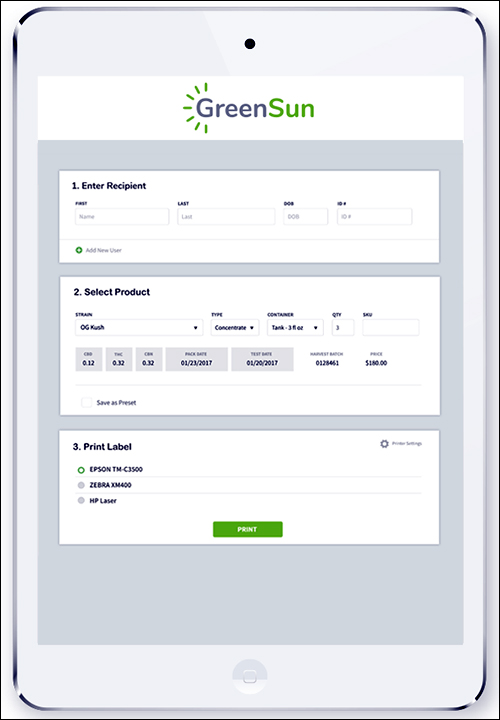
GreenSun is the latest addition to NEPS’ Health e-Connect product family. “We’ve taken the labeling best practices that we’ve developed and installed in hundreds of health-care facilities nationwide,” said Bob Wickham, the firm’s general manager of Health eConnect, in a prepared statement, “and applied it to this newly emerging branch of health care.”
GreenSun can be integrated with any data source, including any point-of-sale or enterprise resource planning system, and can be used independently to create dynamic color labels at the point of need. The system is available in both hosted and onsite models, and provides a flexible, scalable architecture, simplified regulatory compliance, positive plant tracking, boundary control, and mobile and wireless capabilities.
HID Global Acquires Arjo Systems to Expand Its Government ID Business
HID Global, a provider of trusted-identity solutions, has announced that it has acquired Arjo Systems SAS, a supplier of physical and digital identity solutions for secure government ID applications. The acquisition gives HID Global broader capabilities to deploy electronic identification (eID) and ePassport solutions for government programs, HID Global reports.
“Our acquisition of Arjo Systems significantly advances our Government-to-Citizen ID business, broadening our geographical reach and giving us critical mass,” said Stefan Widing, HID’s president and CEO, in a prepared statement. “Arjo Systems is a strong fit for HID Global, complementing our existing government ID offerings with an expanded range of capabilities for government agencies, state printers and local integrators.”
According to HID Global, the acquisition combines complementary strategies, customer bases and offerings that have strong synergies to support innovation for government-to-citizen ID customers. HID will now be able to offer eID and ePassport solutions with complementary products and new software capabilities, chip operating systems, integration services and market knowledge, thus expanding its presence in select emerging markets.
Arjo Systems will be merged with HID Global’s existing Government ID Solutions business. Arjo will continue its operations in France, Italy and Hong Kong.
DENSO Releases Pocket-Size RFID-based Scanner
DENSO has announced that its new pocket-sized SE1-BUB-C scanner, specially made for use over short distances, makes smooth one-to-one RFID processing possible. DENSO, part of the Toyota group and the inventor of the QR code, offers mobile data solutions and devices for the retail industry.
The SE1-BUB-C is the latest addition to the company’s range of scanners and handheld terminals. The pocket-sized scanner with built-in RFID technology was designed for RFID tag processing over short distances. It can be easily connected with smartphones and tablets and is compatible with iOS, Android and Windows operating systems. The scanner weighs approximately 70 grams.
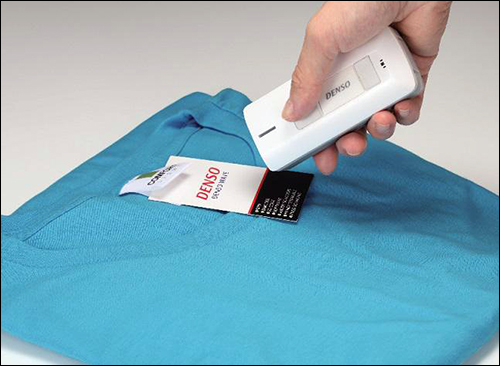
“The optimal scanning distance is about 3 centimeters, while the actual reading distance depends on the individual RFID tag,” said Sina Haupt, a marketing assistant at DENSO’s Auto-ID Business Unit, in a prepared statement. “The SE1-BUB-C offers a unique reading experience over short distances, which, in contrast, is not possible for high-output RFID scanners designed for wide-range and collective scanning.”
The scanner prevents the scanning of other nearby RFID tags, thereby facilitating the smooth and quick processing of RFID tags one at a time. It can connect with other Bluetooth devices simply by scanning a setup code. “This feature of our pocket-sized scanner offers various benefits,” Haupt said in the prepared statement. “For example, on-the-spot inventory checking can be done while serving customers in a store. That helps the staff in retail stores to accurately access information and add value to the customers’ experience.”
Furthermore, the SE1-BUB-C offers a function to convert any RFID tag written in SGTIN-96 to an EAN code. The application for this can be used without any modification, and the same scanning unit can be used to read bar codes and RFID tags. “Just aim and read with the pocket RFID—that is what DENSO wanted to make possible for retailers,” Haupt said. “With our SE1-BUB-C, the steps to set up the device are so much easier now. The staff at retail companies can quickly issue an RFID tag, inspect incoming and outgoing goods, and serve customers while checking the inventory.”
NXP Semiconductors, Widex Unveil BLE Audio-Streaming Hearing Aids
NXP Semiconductors and hearing aid producer Widex have jointly announced that they have collaborated to develop, test and integrate NXP’s NxH2003 Bluetooth Low Energy (BLE) audio streaming system-on-chip into Widex’s Beyond hearing aids.
The two companies worked together throughout the product-development cycle, merging hearing aid engineering and wireless audio streaming semiconductor technology to create hearing aids that can stream wireless audio from an iOS device, consuming only 2.8 mA current at 1.2 volts. This allows users to listen to music directly from their personal devices for prolonged periods of time, according to the companies.
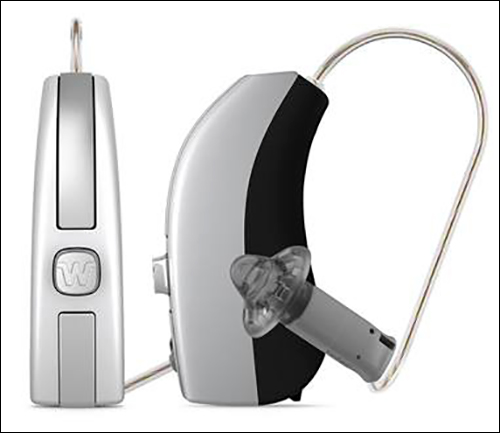
“Our hearing aid customers demand the lowest energy consumption and smallest footprint while adding wireless streaming and increasing processing power,” said Chae Lee, the senior VP and general manager of NXP’s secure interface and power solutions business, in a prepared statement. “The NXP NxH2003 meets these conflicting requirements.” NXP expects to deploy its BLE audio streaming technology in the adjacent hearables market as well, Chae added.
NXP’s BLE 4.1-certified solution measures 7.25 square millimeters and can receive and transmit power at 4mW and 7mW, respectively. The NxH2003 has an embedded M0 microcontroller and CoolFluxTM DSP. The IC is highly integrated and can run directly from a zinc-air battery (typically used in hearing aids), thus minimizing the number of external components and reducing the volume of the end product.

